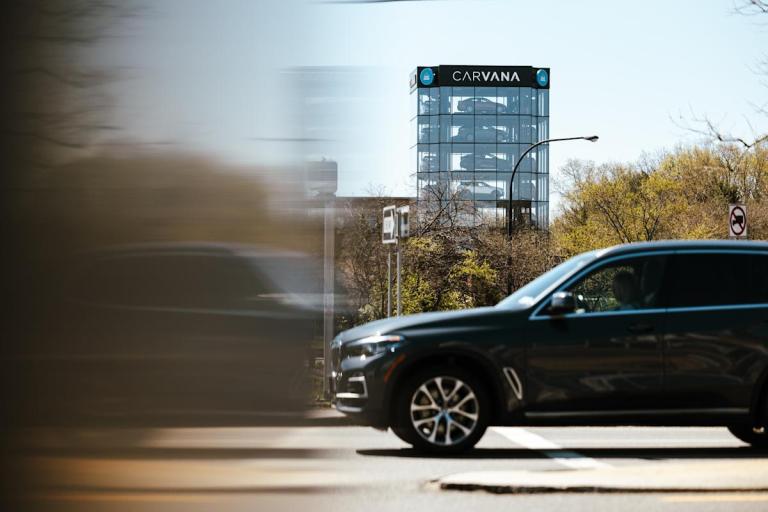Nike investors are eager to see the sportswear giant back on its feet—so much so that even a modest 1% annual sales gain is being celebrated. After years of underperformance and a prolonged turnaround effort, any hint of renewed growth is welcome for the beleaguered apparel maker. The company’s Q1 results, released last week, topped market estimates and initially sent the stock higher.
Elevate Your Investing Strategy:
- Take advantage of TipRanks Premium at 55% off! Unlock powerful investing tools, advanced data, and expert analyst insights to help you invest with confidence.
Yet the rally quickly lost steam, with shares now sliding back toward the $70 level as the gap created by this week’s price action looks set to close. Beneath the surface, the results also highlight ongoing fragility, particularly in margins.

While this early recovery is enough to at least dismiss a fully bearish view, I still believe valuations remain far from de-risked to justify sustained long-term upside. For now, I prefer to stay on the sidelines and maintain a Hold rating on NKE.
Nike’s Trajectory and Valuation Concerns
Over the last five years, Nike’s share price has dropped 41%, while diluted EPS is down 40%. At the same time, the forward earnings multiple has jumped 60% to 45.3x. That gap highlights the disconnect between operational deterioration and the pricing investors are currently assigning.

Yes, part of the multiple expansion comes from EPS falling faster than the stock price. But even so, today’s 45x forward multiple still screens rich compared with the historical average of 33x—especially with earnings pressure and margin compression eroding the fundamentals that would usually justify a premium.
The one caveat is that if investors truly believe in a strong, sustainable recovery, then the premium could hold. That hinges on CEO Elliott Hill actually delivering the turnaround—driving revenue growth, normalizing margins, and reigniting cash generation. And the first quarter of Fiscal 2026 provides the earliest evidence of whether that recovery is finally taking shape for real, showing where things are moving in the right direction—and where they’re still falling short.
Beating Estimates Doesn’t Hide the Struggles
Nike’s Fiscal Q1 numbers came in well above expectations. EPS beat by a wide margin—coming in at $0.49, 81% higher than estimates (though still down 30% YoY). Revenues reached $11.72 billion, about 6.6% ahead of the Street.

Top-line growth was modest at just 1% YoY, but that’s a marked improvement after five straight quarters of negative growth—including a steep 12% drop last quarter.
Still, the details weren’t all that encouraging. Direct-to-consumer (DTC) sales declined 4% to $4.5 billion, which is concerning since this segment typically carries margins 10–15 percentage points higher than wholesale. Meanwhile, wholesale revenues grew 7% YoY to $6.8 billion—positive on the surface, but not necessarily the growth mix investors wanted to see.
Margins also took a hit. Gross margin fell 320 bps YoY to 42.2%, the weakest since 2020 at the height of the pandemic. The decline was driven by lower average selling prices, resulting in heavier discounting, increased outlet sales, and a weaker product mix. To make matters worse, inventories only edged down 1.7% YoY, hardly enough to ease the promotional pressure. That leaves Nike stuck in a defensive spiral—sacrificing margin today to clear product, but postponing any real return to premium pricing power.

A Gradual March Back to Growth
I believe Nike’s fiscal Q1 was at least an improvement over the previous quarter, with some tangible progress—mainly in stemming the decline in top-line sales—even though the road ahead remains long and arduous if the goal is to bring Nike close to where it was a few years ago.
That said, the 1% sales growth came at the cost of a 7% increase in costs, which isn’t really sustainable. This reflects both the sacrifice of average selling prices to burn inventory and the impact of the new tariff package, which adds $1.5 billion in annualized costs.

On the brighter side, CEO Elliott Hill has been repositioning the portfolio around performance and the Sport Offense strategy—creating more agile teams and putting the athlete at the center. Running, in particular, has already shown results, growing 20% year-over-year.
Looking ahead, expectations for Q2 are modest: revenues are likely to decline again in the low single digits, and gross margins are expected to decrease by 300–375 bps, with roughly 175 bps attributed solely to tariffs. SG&A spending will continue to grow at a high single-digit rate in Q2 and a low single-digit rate throughout fiscal 2026, primarily driven by significant marketing investments to support the turnaround, which seems fair.
In short, the near-to-medium-term trend suggests Nike is moving sideways—taking small steps toward a turnaround that analysts currently forecast will only fully materialize in Fiscal 2029, when EPS could approach the 2022 level of $3.86. Given the structural headwinds in the retail athleisure sector, that outcome seems highly challenging, especially since Nike’s premium valuation is driven more by brand power (intangible) than by fundamentals, offering little to no margin of safety.
Is NKE a Buy, Hold, or Sell?
The consensus among analysts on NKE is moderately bullish: of the 29 ratings issued over the past three months, 18 are Buy and 11 are Hold. NKE’s average target price is $85.27, implying a potential upside of approximately 18% from the current share price.

Nike’s Turnaround Marathon Begins to Show Progress
Undoubtedly, there have been some advances in Nike’s turnaround, albeit small ones. Still, any progress is welcome when the prior trend was mostly setbacks. Q1 numbers were, at least, seemingly encouraging enough to allow a more confident view of a multi-year earnings recovery, where Nike would need to grow in the high teens to above 20% per year until at least 2029 to reach the levels it achieved at its peak—and only then could it truly be considered a growing business.
That said, the shift toward lower inventory and a more efficient operation has been slow, and valuation multiples, in my view, haven’t been meaningfully de-risked. Even so, I don’t see a bearish case here. Progress has been made, but a slow and cautious performance is likely, with Nike expected to move roughly in line with—or slightly below—the broader market.





